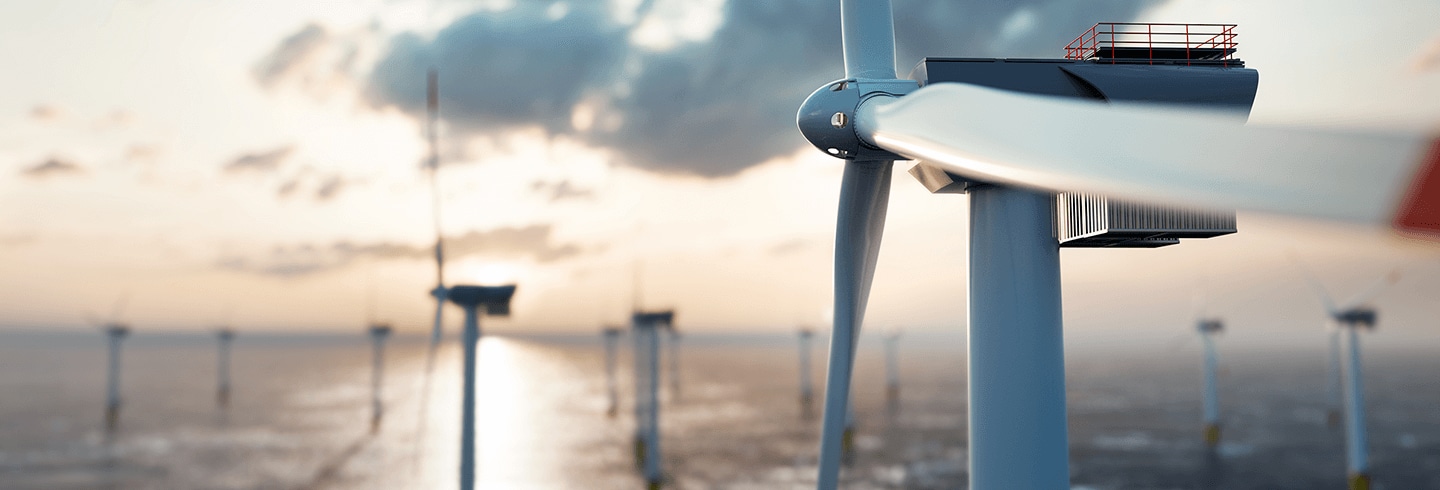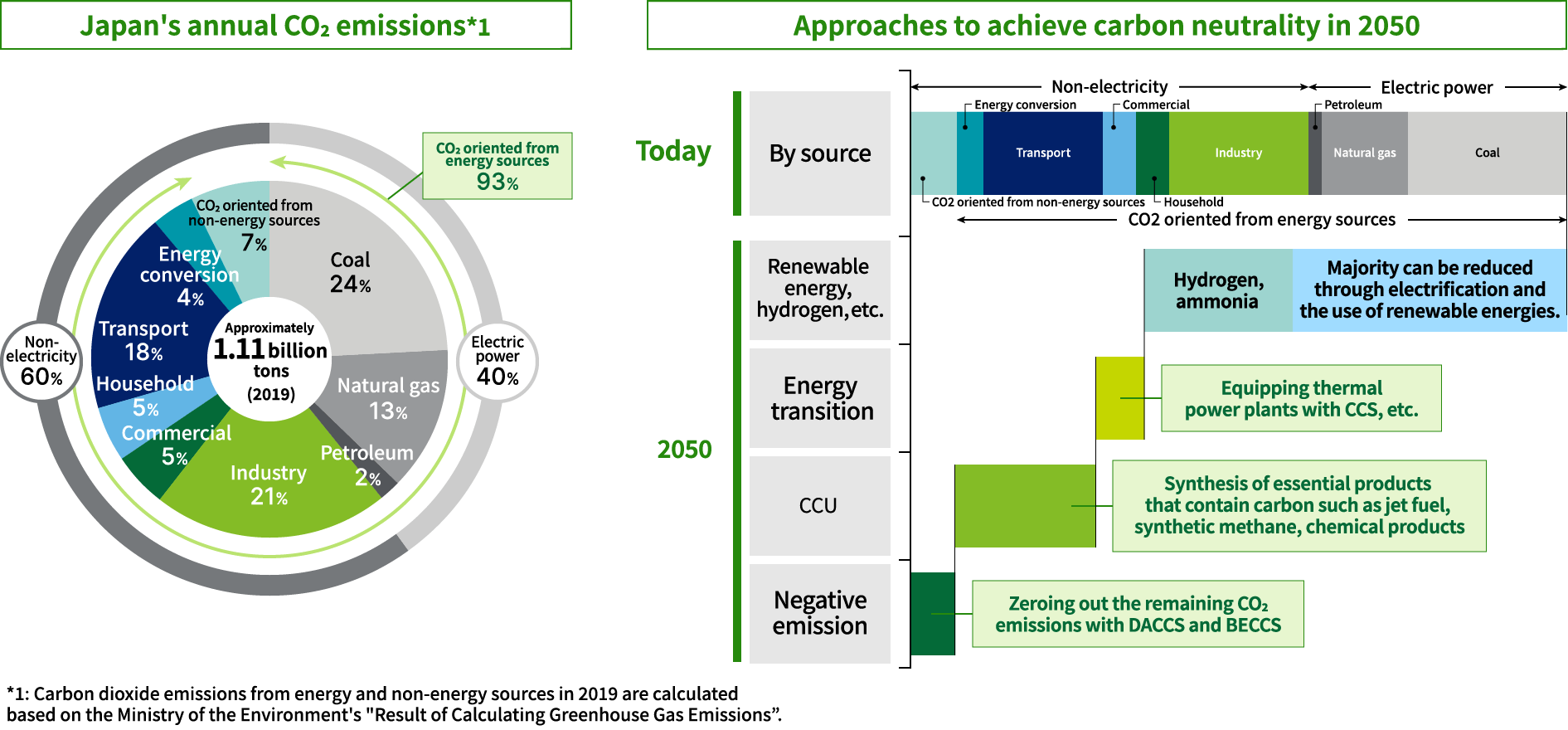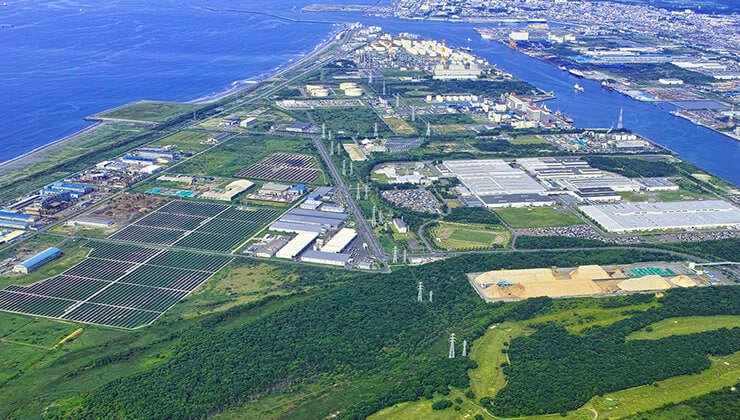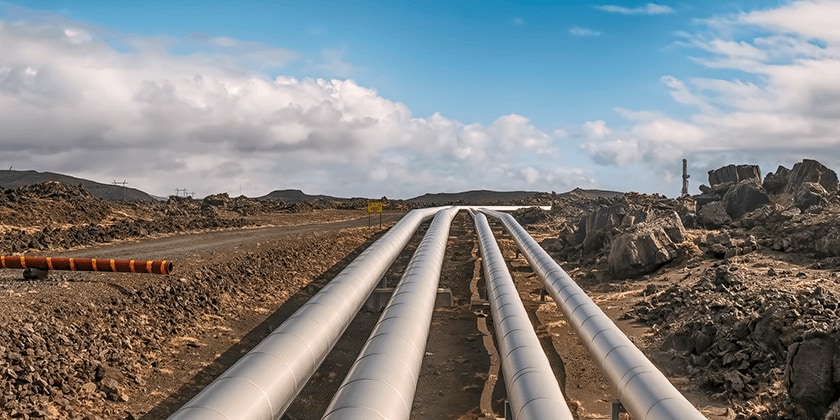
CARBON NEUTTRALITY ACHIEVED WITH CCUS
The Role of CCUS in Achieving Carbon Neutrality
Carbon capture, utilization, and storage (CCUS) is attracting attention as a means of achieving carbon neutrality. By capturing CO2 and effectively utilizing it, CCUS plays an essential role in achieving carbon neutrality as it helps to reduce CO2 emissions that cannot be reduced through the use of renewable energy or hydrogen.
CCUS Leadership
-

Ichiro Okura
Deloitte
Tohmatsu
Consulting LLC
PartnerDeloitte
Tohmatsu
Consulting LLC
Partner
Contact
To contact Deloitte regarding carbon neutrality and CCUS, please click here
Carbon neutrality cannot be achieved solely by electrification and renewables
Japan's annual CO2 emissions are about 1.1 billion tons, of which about 40% come from electricity, and the remaining 60% come from non-electricity sources. In order to achieve carbon neutrality, CO2 emissions from electricity can be reduced through the use of renewable energy and hydrogen. Electrification can also reduce some CO2 emissions from non-electricity sources. Still, these measures are not enough to reduce all CO2 emissions. CCUS will play an important role in reducing CO2 emissions that cannot be reduced through the use of renewable energy and hydrogen.
The three roles of CCUS in achieving carbon neutrality
The three roles that CCUS plays in achieving carbon neutrality are (1) effective utilization of existing infrastructure to support energy transition, (2) carbon recycling, and (3) negative emissions. In other words, a smooth energy transition will be realized with thermal power plants equipped with a carbon capturing and storage (CCS) system until power generation portfolio shifts to renewable energy and hydrogen. Hydrocarbon chemicals and fuels can be replaced by carbon recycled products. Greenhouse emissions which are technically difficult to be reduced can be offset by negative emissions. CCUS is thereby essential to realize carbon neutrality.

The Importance of CCUS in a Net Zero Society as Seen in Japan's Annual CO2 Emissions
Role 1: Energy transition using existing infrastructure
In order to achieve carbon neutrality, entire energy infrastructure from power-generation to demand side facilities needs to be transformed, which requires significant investment. Thus energy transitions need to be gradually achieved by utilizing existing infrastructure, such as thermal power plants with CCS or blending carbon-neutral methane in city gas pipelines. CCUS allows us to draw strategies to achieve zero emissions, while utilizing existing fossil fuel infrastructure effectively.
Role 2: Effective utilization of CO2 through carbon recycling
Products such as jet fuel and city gas are generally considered to be difficult to be entirely electrified. Carbon-recycled products synthesized from CO2 and hydrogen can replace jet fuels, city gas, petrochemicals and other essential industrial products contains carbon thus resulting carbon neutrality.
Role 3: Negative emissions
Greenhouse gases, such as methane emitted from livestock and soil, are generally considered to have few practical means of reduction. Therefore, negative emission technologies such as bioenergy with carbon capture and storage (BECCS) and direct air carbon capture and storage (DACCS), which capture CO2 in the atmosphere and store it underground, help to achieve carbon neutrality by offsetting the greenhouse gases that are inevitably emitted.
CCUS demonstration projects around the world
As discussed so far, CCUS is indispensable for the realization of carbon neutrality. But there are many issues that need to be resolved for its commercial implementation.
Above all, it is necessary to establish a framework for recognizing the environmental value of carbon-recycled products. Location of CO2 emitters and potential consumers are not necessarily located next to each other, and the amount of CO2 to be emitted and consumed also changes over time, and thus significant investment on CO2 transportation will be required. This means that it also requires the development of a financial mechanism for recovering the investment as per transaction rules. In other words, for commercialization of CCUS, it is essential to drastically change regulations and incentives and to coordinate interests across industries.
To overcome these challenges, CCUS demonstration projects are being conducted around the world. Deloitte is actively supporting many of them, including the Porthos project in the Netherlands and the Northern Lights project in Norway. In Japan, Deloitte is promoting an ambitious demonstration project in Tomakomai, Hokkaido. It attempts to provide a comprehensive solution to the complex problem of using CCUS in society.
CONTACT US
To contact Deloitte regarding carbon neutrality and CCUS, please click here.
CCUS FRONTLINE

